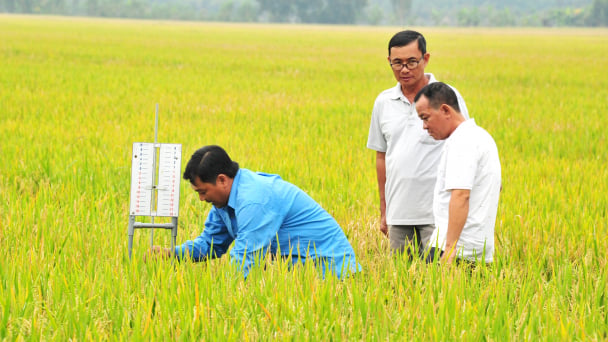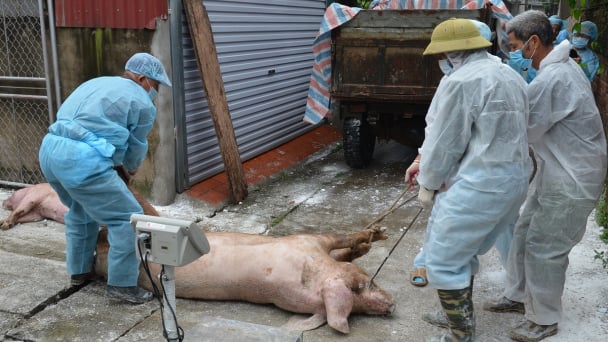September 13, 2025 | 15:20 GMT +7
September 13, 2025 | 15:20 GMT +7
Hotline: 0913.378.918
September 13, 2025 | 15:20 GMT +7
Hotline: 0913.378.918
At the plenary session of the 2025 National Conference on Post-Harvest Preservation, Processing of Agricultural, Forestry, and Fishery Products and Agricultural Mechanization held on September 12, leading experts offered a panoramic view of where the sector stands, where it is heading, and how it must evolve. Their insights converged on three critical pillars: preservation and processing technology, circular agriculture, and green technology.

2025 National Conference on Preservation, Processing of Agricultural, Forestry, and Fishery Products and Agricultural Mechanization. Photo: Linh Linh.
Associate Professor Dr. Pham Anh Tuan, Director of the Institute of Agricultural Electromechanical Engineering and Post-Harvest Technology, underlined a stark reality: despite undeniable advances, Vietnam still loses far too much after harvest, especially in fruit and vegetable chains. The reason lies in fragmented, small-scale production and uncoordinated applications of technology that fail to fit Vietnam’s field conditions.
He argued for nothing less than a synchronized technological leap - research and application must go hand in hand, covering every step from harvest to processing. Machinery and equipment need to be scaled and tailored to local realities, particularly in pre-processing and preservation.
“Most of our machinery remains small in capacity and struggles to keep up with large-scale demands, creating seasonal labor shortages and bottlenecks,” he explained. “We must design integrated mechanization solutions, like the onion-and-garlic harvesting system our institute has developed, to save labor, cut costs, and lift overall efficiency.”

Associate Professor Dr. Pham Anh Tuan stresses the urgency of integrated solutions from harvest to post-harvest. Photo: Minh Hoang.
Adopting advanced quality management frameworks such as HACCP or ISO 22000 is equally crucial. These are not just compliance tools—they are passports into demanding global markets.
To achieve this, Dr. Tuan called for a “closed-loop mindset”: investments in research and technology transfer, value chains linking production, harvest, preservation, processing, and consumption, all designed to reduce loss and maximize return. Farmers, too, must be empowered through hands-on training, ensuring they can operate modern machinery and apply safe, sustainable techniques.
“The harmony of technology, management, and skilled human resources will provide the foundation for raising quality, minimizing waste, and elevating the competitiveness of Vietnamese agriculture,” he concluded.
Building on that theme, Dr. Nguyen Anh Phong from the Institute of Strategy and Policy for Agriculture and Environment argued that circular agriculture is not simply a trend, it is Vietnam’s inevitable path to sustainability.

Dr. Nguyen Anh Phong highlights the potential of circular agriculture. Photo: Minh Hoang.
With its abundance of rice, vegetables, fruits, livestock, and aquaculture, Vietnam generates enormous volumes of agricultural byproducts. Left unmanaged, these can become serious pollutants. Yet, when viewed differently, they are a treasure trove, a “green gold mine” for bio-products, organic fertilizers, animal feed, or renewable energy.
“Take rice straw,” Phong suggested. “Rather than burning it, we can cultivate mushrooms or turn it into feed. Livestock waste, instead of being discharged, can generate biogas for power or high-quality organic fertilizer. The opportunities are limitless".
Realizing this potential requires a three-pronged strategy. First, policy: a clear legal framework to encourage enterprises and cooperatives to invest in byproduct processing technology. Second, financial support: credit packages, tax incentives, and applied scientific research to transform waste into high-value goods. Finally, demonstration: pilot projects in select localities that showcase scalable models for nationwide replication.

Agricultural byproducts: from burden to valuable resource. Photo: Hoang Vu.
“Circular agriculture is more than a model, it is Vietnam’s inevitable direction,” Phong affirmed. “It allows us to grow our agricultural economy, safeguard the environment, and adapt to climate change simultaneously.”
If technology unlocks efficiency and circularity ensures sustainability, green innovation will determine Vietnam’s ability to thrive globally.
Professor Dr. Le Van Tan, Editor-in-Chief of the Journal of Science and Technology at Ho Chi Minh City University of Industry, described green technology and future foods as the “passport” Vietnamese products need to enter international markets.
He noted that today’s consumers scrutinize more than taste or price; they care about origin, production methods, and environmental footprints. That is why the shift toward organic farming, functional foods, plant-based proteins, and biotech-driven products is not optional but essential.
“Vietnam possesses extraordinary biodiversity,” Professor Tan remarked. “This gives us the raw potential to create next-generation food products with high nutritional value, strong market appeal, and sustainable credentials.”

Green technology helps Vietnamese agriculture align with international standards. Photo: Minh Hoang.
To harness this, Vietnam must prioritize research in genetic and biological sciences, enabling breakthroughs in crop varieties that resist pests, yield more, and deliver better nutrition. But science alone will not suffice. Building strong brands, ensuring transparent traceability, and aligning with international standards are equally vital.
Professor Tan stressed that global integration must also go beyond trade agreements. It requires active participation in multilateral forums and strategic learning from advanced economies. “By adopting global best practices, Vietnam can expand market access while steadily raising its production capabilities to world-class levels,” he said.
The conference underscored a simple but profound truth: Vietnam’s agricultural future will not be decided in the fields alone. It will be forged in research labs, mechanization workshops, circular economy hubs, and green-technology incubators.
By combining integrated mechanization, circular agriculture, and green innovation, Vietnam can not only cut losses and reduce waste but also confidently enter global markets, transforming agriculture into a competitive, sustainable, and future-ready sector.
Translated by Linh Linh

(VAN) The Vietnam Bear Rescue Center in Bach Ma National Park will become a modern rescue facility and a prominent nature conservation education site in Central Vietnam.

(VAN) Vietnam is accelerating to fulfill its international commitments on legal timber and forest protection, reinforcing its status as one of the world's leading wood processing and export hubs.
/2025/09/10/2151-3-141612_144.jpg)
(VAN) The greatest value of the 'Strengthening Safe Crop Value Chains in Northern Vietnam' project lies in the fact that farmers continue to maintain its practices after its completion.

(VAN) The global food system is under mounting strain from multiple directions: malnutrition persists alongside food waste, biodiversity is declining, and soils are degrading.

(VAN) The agro-climatic bulletin helps farmers proactively respond to climate change, plan crop production effectively, reduce risks, and increase sustainable yields.

(VAN) African swine fever is likened to a storm due to its rapid transmission, with a mortality rate of up to 100%, leaving devastation in every farm it sweeps through.